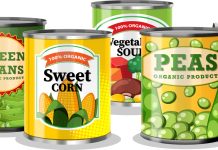Continuous or discontinuous, modern pasta dryers provide a homogeneously dried product, ready for packaging. Two crucial parameters must be selected with great care: temperature and relative humidity; however, even space management and energy savings require special attention.
Drying is the most important technological task in pasta production processes. The product, obtained from selected ingredients, mixed and shaped, finds its final completion with the drying process.
Process steps
After its preparation, pasta humidity is around 30%. It is then pre-dried, dried and then stabilised, and during the last step it gives off hardly any moisture. The last phase, i.e. the stabilisation, is necessary to dissipate the tensions pasta usually develops during the drying process, and which mainly affect the product exterior. Pasta goes through pre-drying, main drying and stabilising phases, in which climate control systems and higher humidity conditions in the climate zones prevent pasta surface from becoming vitreous. Pasta is in its plastic state for the whole drying process. After drying, the moisture content in the product is about 12%. In fact, according to the law dry pasta may not have a water content of more than 13%, to prevent the growth of pathogens and spoilage micro-organisms, which can survive the drying process and trigger undesirable reactions that have a negative influence on the foodstuff. The drying process follows a diagram in which temperature and moisture are plotted. The moisture content of the product at the end of the drying process depends on many issues, such as: shape, thickness, holding time, temperature, humidity conditions in the different climate zones; and quantities of air circulated in the production area.
Dryers
After pasteurisation, the dough is pre-dried in pre-drying units featuring stainless steel vibrating or rotary frames, with multi-shelves, and equipped with electric heaters or heat exchangers powered by hot water or steam. On continuous automatic lines, the pre-dryer usually is a separate unit, except in the case of some lines for the production of short pasta, in which pre-drying often takes place in a separate section of the drying unit. Usually a continuous dryer consists of one or more forced air ventilation units with heat exchangers, for transferring the heat to pasta and the moisture of the pasta to the air (in form of steam). Pre-drying is then followed by the drying phase. The dryers available in modern pasta industries can be either static or dynamic. In dynamic dryers the pasta that goes through the various phases is more homogeneously dried. This method is mainly implemented by large production plants working continuously, with short stops and only a few production changes. In static dryers, the drying phase is discontinuous. They are loaded with a fixed quantity of pasta, which is removed only at the end of the process, when the new amount of product is loaded, without transport. Both, static or dynamic, dryers are insulated structures, sometimes filled using heat-injected polyurethane foam providing for high thermal stability next to best soundproofing and increased strength of the whole construction. Thermal insulation of the drying line from the factory environment is vital in order to obtain perfectly dry pasta. Insulation throughout all drying steps must be constantly monitored in order to identify possible leaks. To prevent this possibility, the pressure inside the drying line is slightly higher than the environmental pressure. A constant internal overpressure in continuous lines is generally obtained by delaying for a few seconds the ejection of humid air with respect to the injection of dry air in pasta ventilation systems. Some dryers are equipped with an electronic control unit with various pre-loaded programs for optimum drying of different types of pasta. Air is heated with electric heaters or heat exchangers powered by hot water or steam. Hot air moves from right to left, and vice-versa. This reversal is necessary for drying pasta both on the surface as well on the side resting on the tray. Trays can be loaded with different quantities of pasta, according to the type, in order not to overlap or crush the product when it is still soft. Some producers prefer longer drying times. The purpose of this choice is to obtain the highest stabilisation of the product next to longer life of the plants, which are no longer subject to extreme temperatures, ranging from 80° to 85°C. Other companies, on the other hand, prefer high-efficiency ventilation systems, with ducted fans, providing for high-speed wrapping; they feature a high-speed wrapping in order to maintain extreme thermo-hygrometric conditions. Some systems feature a compact structure and contain within a single unique body, the wrapping as well as the drying and stabilisation phases, as well as a pre-dryer, which, via an oscillation system capable of keeping pasta perfectly detached and easily traversable also by air, and a cooler. Other systems available in modular construction, allow creating solutions with different heights and lengths, in order to obtain maximum production in the space available. Cooling can be obtained by means of vibrating tables. The air cooled naturally or by cold water batteries passes through the product, providing for an effective cooling of the dough, which is then returned to the silage section, ready for final packaging. Gradual cooling can provide a better shape stability. In coolers, where the exit temperature of the product is below 4°C, batteries are equipped with an automatic defrosting system. To meet current packaging requirements, some dryers have combined storage systems, alternating full and empty trays. Trays can be emptied randomly or orderly, with automatic transfer to the packaging unit. In small pasta factories might prefer superimposed versions, to solve thermal treatment, pre-drying and cooling in a small footprint. In these systems, pre-drying of different types of pasta occurs in the upper section, and the lower part is devoted to cooling and stabilisation. The two zones are completely independent, and thermally separated, with temperature, humidity and treatment time controls. The number of trays is variable according to the available space and the type of treatment; even the speed is variable, so that the drying and cooling times can be adjusted as required. The management system of the process control is totally automated, ensuring optimal control of the whole line parameters during all phases of the process via a user-friendly human machine interface. This system allows the traceability of production lots, and production parameters can be checked via internet. Manufacturers are active with regard to energy saving. For instance, the control of cooling air ensures a series of advantages in terms of consumption of thermal energy (up to 40%), cooling energy (by 20%), and electric energy (by 10%). Many dryers allow the recovery of heat from exhaust air flows; further savings can be made thanks to optimized aerodynamic concepts and the use of energy-efficient fans. Some dryers do not use steam and, compared to conventional technologies, consumption is reduced given the same productive output. Great attention is devoted also to easy maintenance of the whole system and food safety of the final product.
Monitoring of critical points
To avoid cracks and undesired changes in colour, the whole process must be controlled and conducted in a perfect manner. Crucial is the measurement and adjustment of process variables, thanks to accurate and reliable probes and electronic circuits, using integrated circuits and programmable logic systems. Temperature is one of the most important factors to control. Resistance thermometers are used to this purpose, i.e. thermally sensitive elements with variable resistance. This resistance changes according to the temperature. The temperature is obtained by comparing the measured value with the values of a comparative table. Resistance thermometers are stable over time and can be connected to control loops. Another process parameter to be monitored is relative humidity, by using a psychrometer or, in modern continuous lines, capacitive resistive probes. The psychrometer can be used to determine both relative humidity and temperature by connecting its probes to temperature controllers. These two crucial parameters can be measured also with capacitive resistive probes, which provide for compactness, direct reading of relative humidity, as well as elimination of the water from the wet bulb of the psychrometer, and reduced maintenance compared to the more conventional tool. Monitoring and adjusting the climate in the drying area gives perfectly dried pasta. A sudden elimination of moisture, in fact, may develop cracks. Usually dryers are modular in construction, and comprise a variable number of climate zones. Each zone is equipped with a humidity probe. Since the moisture content of the end product plays such an important role, the measurement accuracy of humidity sensors is crucial. In fact, even if the dryer is excellent, if the climate is measured incorrectly (temperature and humidity), there will be rejects in production or problems in process control. Parameters don’t have to be just measured, but also adjusted and calibrated if necessary. For calibration, the probes are equipped with digital instruments. It is very important that pasta factories can adjust and calibrate their probes directly, using handheld instruments and other accessories, as for instance blind plugs for control measurements available on the dryer. Thanks to these accessories users can calibrate the humidity probes themselves, saving precious time, and avoiding machine standstills or problems during process due to lack of controls.
Belts for dryers
Dryers basically can be equipped with different types of belts, according to different production needs. There are conveyor belts made of suitable fabrics, designed to meet all requirements for high or low temperature drying. The belts are of special food-grade type; they do not expand, exhibit good resistance to hydrolysis and withstand high temperatures. Even the types of fabrics available, such as polyester, polyester/PVDF, peek/PVDF) allow a careful choice according to the needs. Some belts feature a seamless fastening system, which allows considerable reduction of assembly times. Rolling shutters with central zone in synthetic fabric provide an effective processing of pasta, as the air flows through the product uniformly thanks to the numerous slots. The porosity of the central zone in synthetic fabric, combined with high load capacity per square meter, give high production outputs in small spaces.






